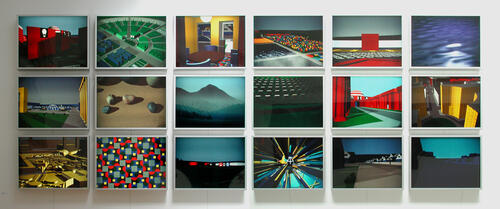
Last Saturday, while making my way through a frenzy of de Young Museum guests visiting the new Monet exhibit (go check it out now!!), I was also able to attend a fascinating lecture held by artist Matt Mullican, whose first solo project in the United States in twenty years has taken over the museum’s atrium from now until January 26, 2020. Mullican has an eclectic range of artistic talents, his work encompassing drawing, collage, painting, photography, video, sculpture, installation, and performance under hypnosis. Yeah, that last one can get pretty weird.
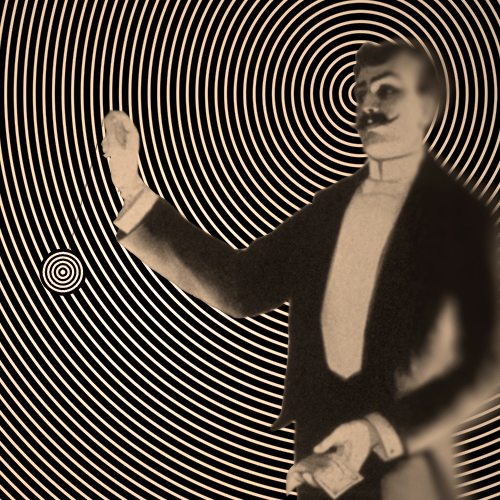
On the count of three, you will become really interested in strange, conceptual art!
Mullican walked all of us through his beginnings as an art student in the 1970s, being a member of the "Pictures Generation" along with such artists as Jack Goldstein, Sherrie Levine, Cindy Sherman, Louise Lawler, and Richard Prince. Mullican conveyed his deep fascination for the subject of an artistic work independent of its frame—meaning, he believes in a greater reality hidden behind what simply appears on the canvas, or in the photograph, a wider world brought into existence by the interior lives of the each person viewing these images.
When reading a comic book, for instance, our direct access to the world through which the comic’s story is told is limited, represented by whatever can pictorially fit inside each panel. But Mullican argues for a greater world existing beyond the frame, one our minds fill in with the help of those images we have access to. For Mullican, these psychic environments are just as real as anything, and extremely compelling. On the subject of Superman, Mullican went on to elaborate that he’s less interested in the superhero himself and more interested in the air that surrounds him.

Partly cloudy, a little windy, and super meta
Mullican is most famously known for a system of symbols and pictograms he started developing decades ago. Their existence has become increasingly relevant, as they look and function in eerily similar ways to those icons we see on the screens of our smartphones. Mullican’s understanding of pictures, shapes, and colors, as well as their relationship to the psyche, proves he was way ahead of his time.
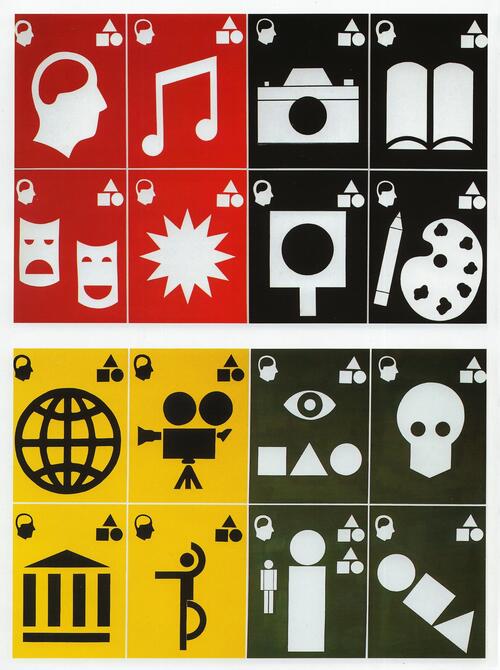
Signs Mullican created during the late 1970s, or blueprints for smartphone apps?
During his lecture, Mullican elaborated on these symbols, and showed us a chart that he had devised many years ago, upon which he had aimed to map the universe. The chart contains a set of shapes and colors denoting 1. the material world (green), 2. everyday life (blue), 3. culture and science (yellow), 4. language (black and white), and 5. subjective experience (red).
Over time, the labels and look of his “five worlds” chart has changed (once modeled after a personal cosmology, representing heaven and hell), but the overall system has been reproduced again and again in a variety of mediums, drawn, painted, sculpted, turned into a digital city, even built into a real warehouse where people can literally walk, room by room, through Mullican’s scribbled chart of the universe. Philosophically speaking, this is pretty wild stuff.
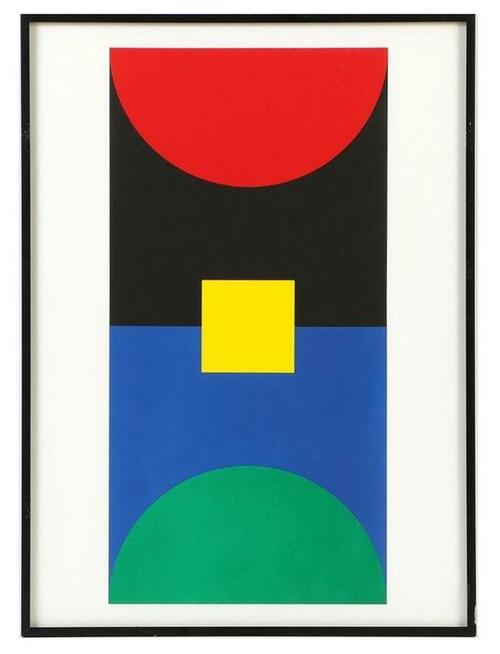
Mullican’s chart as a silkscreen, Untitled I (1991)
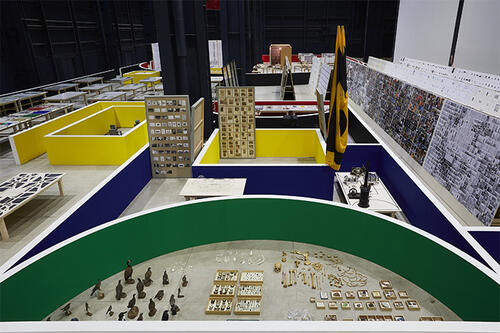
Mullican’s chart as a giant warehouse, “The Feeling of Things,” 2018
As the lecture drew to a close, Mullican rose the stakes one meta-level higher, by playing a video of himself in a state of hypnosis, which then induced in Mullican himself a state of hypnosis. It was pretty weird, but it was also kind of amazing. The psyche longing to know itself, brought to you by Matt Mullican.
His latest project at the de Young includes 40 rubbings mounted on the main wall of Wisley Court, as well as flags, light boxes, and bulletin boards. Mullican is a pretty fascinating artist and, sadly, largely overlooked in the United States (though Europe loves him). I recommend anybody in the Bay Area to take a trip out to this museum and walk through Wilsey Court (it’s free!) to check out Mullican’s work.









